The more things change… was an exhibition of work by key members of the Blk Art Group that ran at Wolverhampton Art Gallery from April to July 2023. This article explores the extent to which it challenged historic perceptions of the Blk Art Group’s work through its innovative foregrounding of materiality and aesthetic practice.
Emily Langridge
Please note that this exhibition has now ended.
Download a PDF of this article
Keywords: Blk Art Group, Materiality, British Art, Twentieth Century Art
On Exhibit: The more things change…
The Blk Art Group formed in 1979 to challenge perceptions of Black art and engage with the political struggles of Black people in British society. Although the group’s membership and aims have shifted over the years, the group has consistently been defined by that original aim. Four decades after the first Black Art exhibition, Black Art An’ Done, and the first National Black Art Convention – both held in Wolverhampton – five of these artists were brought back to the city for The more things change…, a provocative retrospective questioning the limitations of that aim.
The exhibition The more things change… ran from 27th April to 9th July 2023 at Wolverhampton Art Gallery [1]. Co-curated by Dr Ian Sargeant, Dr Sylvia Theuri and the Blk Art Research Project, it explored the history and legacy of the Blk Art Group. The more things change… featured work by five key founder members of the group – Claudette Johnson, Keith Piper, Marlene Smith, Donald Rodney, and Janet Vernon – spanning from their earliest works to the present day. A foundational element of the exhibition was its excavation of the collective’s origins and early aesthetics rooted alongside an exploration of each artist’s evolving practice. In this article, I will review the exhibition and argue that The more things change… successfully highlighted the continued importance of the Blk Art Group and their influence whilst simultaneously proposing a shift in the way their works are viewed. I propose that we situate their work within the artistic process of making and materiality in contrast to the approaches that ‘pigeon-hole’ their work based on marginality that has dominated discussions of the Blk Art Group. Although the curatorial decisions strongly argue for this shift towards materiality, the accompanying public programme demonstrates that, despite this incredibly important step, there is still a tendency towards defining ‘Black art’ even in spaces aiming to expand the narrative.
The Blk Art Group was an association of young artists, all children of Caribbean migrants based in and around the industrialised West Midlands, that sought to empower Black artists by raising questions about the identity of Black art and what its future could be. It was founded by Eddie Chambers and Keith Piper and their mentor Eric Pemberton in 1979, although the group’s membership quickly expanded and often shifted. Many of their early exhibitions, particularly Black Art An’ Done, focused on racial injustice, and were dominated by male artists. As time progressed, and as The more things change… demonstrates, specific concerns regarding the intersection between anti-racism and feminism led to the artists following their own paths and parting ways in 1984. Many of the artists involved in the Blk Art Group contributed significantly to the British Black arts movement and are key figures in the history of British art. The more things change… emphasises the importance of the group’s origins and continued battles about the politics of Black art and its definition whilst simultaneously exploring the individual practices of its artists in the 1980s and beyond.
The exhibition
Respecting the individual practice of each artist was clearly worked into the curation of The more things change…. The works were given room to breathe as the darkened walls and use of spotlights helped distinguish between each work. The introductory panel encouraged visitors to engage in Shari Tishman’s practice of slow looking which emphasises taking time with a particular artwork to explore its details and emotional effects. Building an environment for slow looking in the exhibition allowed visitors to deeply engage with artwork, encouraging taking time and truly considering each work – evaluating and valuing works for their individuality and messages rather than suggesting that any one perspective could be used to approach the artwork on display.
The first work a visitor faced when entering the exhibition was Claudette Johnson’s immense Trilogy series (1982–1986, fig.1). Three women take up an entire wall; a prominent position so rarely afforded to Black women who have been diminished in the history of art. Their red, black, and blue outfits are striking and demand attention. Johnson’s commitment to the scale of these works is evident in her expansive mark-making, with lines covering the visibly creased paper in erratic yet carefully considered strokes. Each figure is slightly cropped as we see them from their foreheads to their knees; a cleverly utilised device that brings them out of their frames rather than making them feel constrained. The figures are all clearly individuals as their colouring, clothing, and body language combine to create a trilogy of powerful portraits suggesting a strength in sisterhood that nonetheless acknowledges the importance of difference.
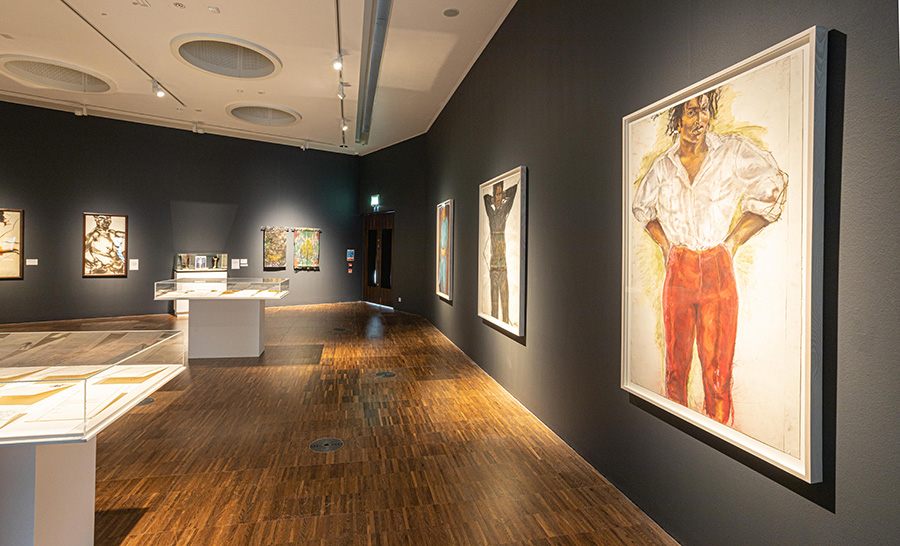 Fig.1 Installation view of the exhibition The more things change… © Owen de Visser. Image courtesy of Wolverhampton Art Gallery.
Fig.1 Installation view of the exhibition The more things change… © Owen de Visser. Image courtesy of Wolverhampton Art Gallery.
Trilogy shines because of its immersive materiality. This makes it the perfect work with which to open The more things change… because Johnson’s use of material is key. It is the tactility of these figures that makes them so intense. Some of Johnson’s pastel scratches teeter between harshness and softness and this dynamism blends beautifully with vibrant passages of watercolour to imbue these figures with vitality. The traces of Johnson’s process – creased paper, smudged corners – signal the time and energy devoted to creating these women. Yes, the representation of three individually distinct and bold Black women is important to Trilogy, but equally important is the fact that this representation would not be done justice if its materiality is overlooked.
After walking past Trilogy, viewers would next encounter two batiks and a display case of jewellery by Janet Vernon (fig.2). Materiality is clearly central to Vernon’s practice as both the batiks and her jewellery utilise patterns and texture as their core elements. The two batiks, made between 1990 and 1995, are hung together and illuminated by one spotlight. This unites them, particularly as they also share one short label, but their distinctive colouring highlights their individuality. The marks adorning their surfaces mix abstraction with repetition to create unique and tantalisingly intricate patterns that draw the viewer in. Similarly, the variety of jewellery on display is presented as a collection yet each piece retains its own significance. The range of patinas, marks, and textures throughout combine the different materials and techniques into statement works. Vernon’s work evokes a visceral tactility to feel the weight of the materials and to trace the textures of the pieces. As with Trilogy, the curation of Vernon’s work highlights her artistic individuality and foregrounds materiality.
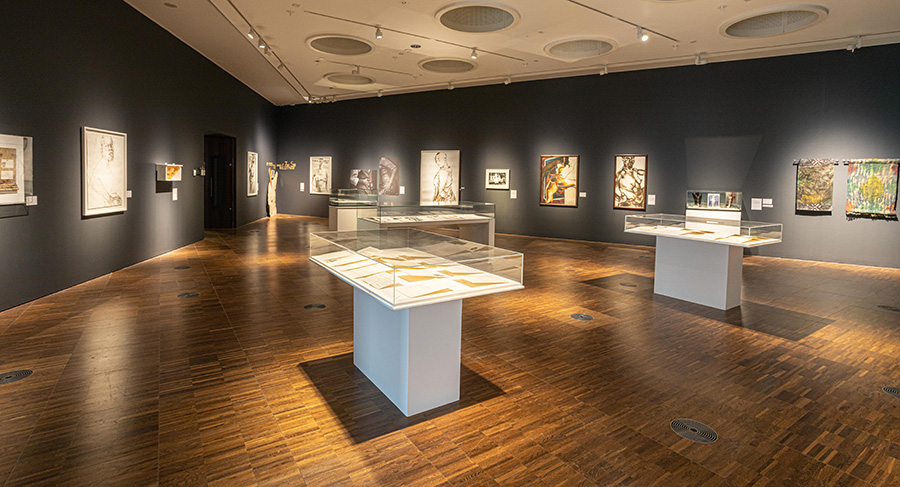 Fig.2 Installation view of the exhibition The more things change… © Owen de Visser. Image courtesy of Wolverhampton Art Gallery.
Fig.2 Installation view of the exhibition The more things change… © Owen de Visser. Image courtesy of Wolverhampton Art Gallery.
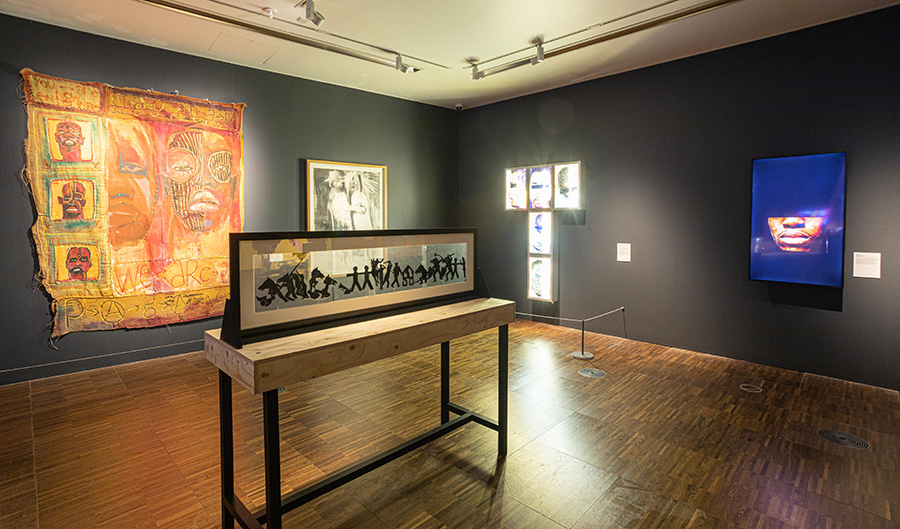 Fig.3 Installation view of the exhibition The more things change… © Owen de Visser. Image courtesy of Wolverhampton Art Gallery.
Fig.3 Installation view of the exhibition The more things change… © Owen de Visser. Image courtesy of Wolverhampton Art Gallery.
Going through two heavy wooden doors, the gallery visitor passes into a space looking specifically at the effects of colonialism (fig.3). The first work that caught my attention in this space was Donald Rodney’s Cataract (1991/2023), a digitised remake of a slide-tape projection. The work displays a composite selection of images of different Black men spliced together to make an almost-face. The materiality here is interesting: it poses questions about how different the effect of this illuminated screen may be in comparison to Rodney’s original projection. However, Cataract signals the thematic shift in the second space. The room’s interpretation panel highlights that it explores ideas around the effects of empire and colonisation. Cataract presents various anonymous men in fragments of eyes, noses, mouths, and moustaches that combine to create an image reminiscent of police photo-fits. No man is seen in his entirety and none of the fragments quite match up to create a believable face. They are all subsumed by the concept of ‘the Black man’. Rodney’s police-style collage clearly critiques empire’s legacy by challenging Britain’s surveillance state and the all-too common perception of Black men as criminal in British society.
Rodney’s presence is key to the second room of the exhibition, and his preparatory works for Soweto/Guernica (1988) dominate the centre of the space. The drawings on paper and acetate feature multitudes of figures that each seem to be in their own implausible stories: megaphones lie on the ground next to figures on horseback next to half-boar, half-human hybrids next to houses on fire. On a material level, the transparent acetate is a device enabling the creation of a world that feels simultaneously achievable and unreal. This cleverly supports the frantic nature of the drawings’ content. The chaos of the drawings suggests a chaotic inspiration, but they are given no further context by the exhibition – it is the title of Rodney’s work that provides that link. In an art-historical context, ‘Guernica’ immediately recalls Pablo Picasso’s Guernica (1937), a seven-metre-long by three-metre-high anti-war painting responding to the bombing of the Basque town. Soweto is perhaps a less well-known reference in comparison. Soweto is a suburb of Johannesburg in South Africa, created as a township in the 1930s to separate Black citizens from white. The anti-war implication when tying Soweto with Guernica suggests Rodney’s focus was on the Soweto uprising of June 1976. Led by students in response to the enforcement of Afrikaans as the language of teaching, the uprising led to the deaths of twenty-three people, twenty-one of them Black, on the first day, with the total estimate of death up to seven hundred. These preparatory works show Rodney’s practice grappling with the suffering caused by the legacies of colonialism and the brutality of war, while reminding viewers of how these continue to bleed into everyday life for Black people in Britain.
Keith Piper’s Pan Afrikan Paintbox (1983) is also prominently positioned in this space. Its metallic handle suggests its portable functionality, but the front has been removed to expose compartments perfectly sized for each individual element and it has been mounted on the wall. Removing its function, places the viewer’s focus on the box and its elements. Painted white in thick layers, clumps of paint emphasise areas where the paint has chipped away, suggesting the work’s age through the notion of ‘wear and tear’. As with Vernon’s textiles and jewellery, Pan Afrikan Paintbox urges its viewer to touch the glass jars and moulded jaws and to trace the texture of the paint; in this way, the paintbox retains a semblance of purpose. In addition to signalling the function of the box, the work’s title registers as a reference to the name of early exhibitions by the Blk Art Group, The Pan-Afrikan Connection, through which the group exhibited work exploring Black political struggles in 1980s Britain. Pan-Africanism is a movement encouraging solidarity between both indigenous Africans and diasporas of African ancestry. Piper’s Pan Afrikan Paintbox works then as a summary of the second room’s approach to the group’s art: the materiality is mainly highlighted for its ability to reinforce the works’ political agendas and is overlooked for its own innovation and impact.
The final works I wish to discuss require a return to the first gallery of the exhibition. These works were placed on the back wall and they appear to represent the boundary between the overwhelming materiality of the first room and the emphasis on political questions in the second space. They are Ad(dress) Rehearsal (2014) and Good Housekeeping III (2023) by Marlene Smith. Ad(dress) Rehearsal consists of two large-scale photographs printed onto vinyl and placed directly on the gallery wall. Golda and Wesley are close-up photographs of Smith wearing her parents’ clothes. In black and white, the focused nature of the photographs requires the viewer to piece together individual details. This results in a work that expertly explores the tensions and boundaries of gender and embodiment. We are told that the bodies in the work are Smith’s, and yet the strong focus on the clothing blurs the ability to identify a specific body and denies the viewer any possibility of reading gender. Consequently, whatever exists beyond the frame does not seem to hold much significance. It is the materiality of the clothing and the body that stands out in Ad(dress) Rehearsal. Since the exhibition ended, Ad(dress) Rehearsal has been acquired for the government’s art collection, highlighting a shift beyond the focus on political representation to explore questions around gender, family, embodiment, and materiality in Black artists’ practices.
In the corner of the first room, my attention was immediately drawn towards Smith’s second work, through the yellow words: ‘My mother opens the door at 7am. She is not bulletproof,’ emblazoned on the wall and accompanied by the sculpted figure of a woman’s head and torso and a photograph in a white frame. The work is a recreation of Smith’s mixed media, Good Housekeeping I (1985), which was destroyed and is now only known through its appearance in the seminal The Thin Black Line exhibition at London’s Institute of Contemporary Arts in 1985. This iteration retains the original’s use of found materials and engagement with the systematic racism and policing practices that led to the shooting of Dorothy ‘Cherry’ Groce in Brixton that same year. By sculpting the female form and painting the words directly onto the gallery wall, Smith has made her figure share our space. The result is intensely human and evokes visceral emotions. There is an immediate recognition that this woman could be any Black woman, that she could be anyone’s mother. ‘She is not bulletproof’ is both a plea for protection and a call for justice that continues to resonate four decades later. The familial intensity of Good Housekeeping III is reinforced by Smith’s own family photograph on the wall almost cradled in the crook of the figure’s neck. Materiality is intrinsic to this work’s comments on living in racist societies.
Each of the works featured in this review powerfully use their materiality to convey specific messages. This materiality is emphasised to varying extents depending on the work’s position in the exhibition. The curation of The more things change… ensured a continued sense of the artists’ presence and their individual aesthetic practices over time by consistently engaging with themes with which the Blk Art Group were concerned – racial injustice, feminism, and the future of Black art – alongside encouraging its audience to take time with each work and explore their nuances.
Resources and the public programme
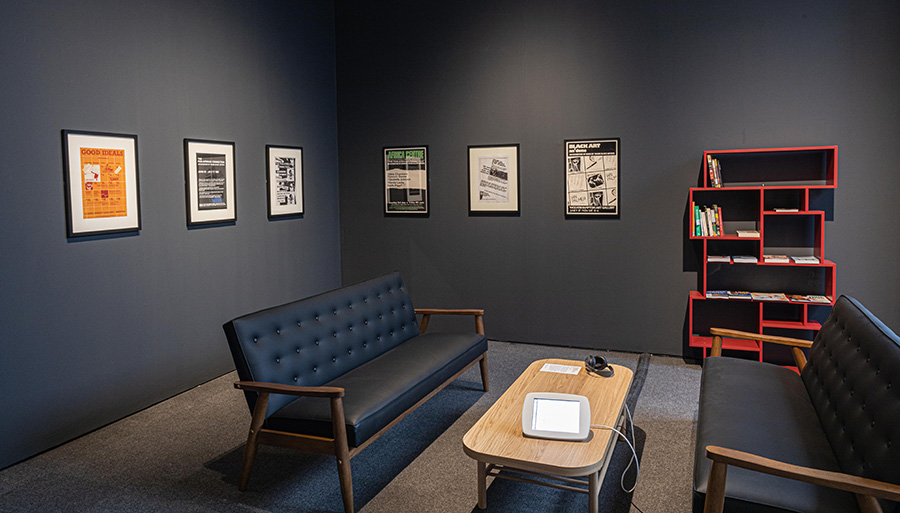 Fig.4 Installation view of the resource and gathering space of the exhibition The more things change… © Owen de Visser. Image courtesy of Wolverhampton Art Gallery.
Fig.4 Installation view of the resource and gathering space of the exhibition The more things change… © Owen de Visser. Image courtesy of Wolverhampton Art Gallery.
As part of the exhibition, the third gallery space was utilised as a resource and gathering space charting the legacy of the Blk Art Group and providing an opportunity for visitors to reflect on the exhibition’s themes. Historical context was woven throughout the exhibition space: the first gallery presented archival material from The Pan-Afrikan Connection exhibition at the Herbert Art Gallery in Coventry from 1983, revealing how key decisions such as the selection of work and the planning of the public programme were made, as well as featuring press reviews and media reports that created controversy around the exhibition. The third gallery space picked up on this, by featuring archival material including original posters for the Blk Art Group’s early exhibitions and exploring the legacy of the group through their connections to contemporary art with documentation of A Great Day in Brixton, organised by the Black Cultural Archives in 2022. The area also contained a variety of educational resources such as a radio show by artist Sonia Boyce on Donald Rodney, films including Smith’s performance of Ad(dress) Rehearsal II (2014), and Claudette Johnson talking about her practice, plus a range of educational articles and books for visitors of all ages and interests (fig.4). These books have now formed a collection held in Wolverhampton Art Gallery’s resource centre that can be accessed in person. Furthermore, the space invited visitors to connect by listening to playlists selected by the featured artists and the exhibition’s curators. The back wall was dedicated to a timeline of the key artistic, cultural, and political events that led to the formation of the Blk Art Group that asked visitors to add their own memories and experiences of social and artistic interactions from the late 1980s onwards via post-it notes (fig.5). By creating a dedicated resource and gathering area, The more things change… highlighted the importance of ensuring histories and materials are archived, cared for, shared, and used for education.
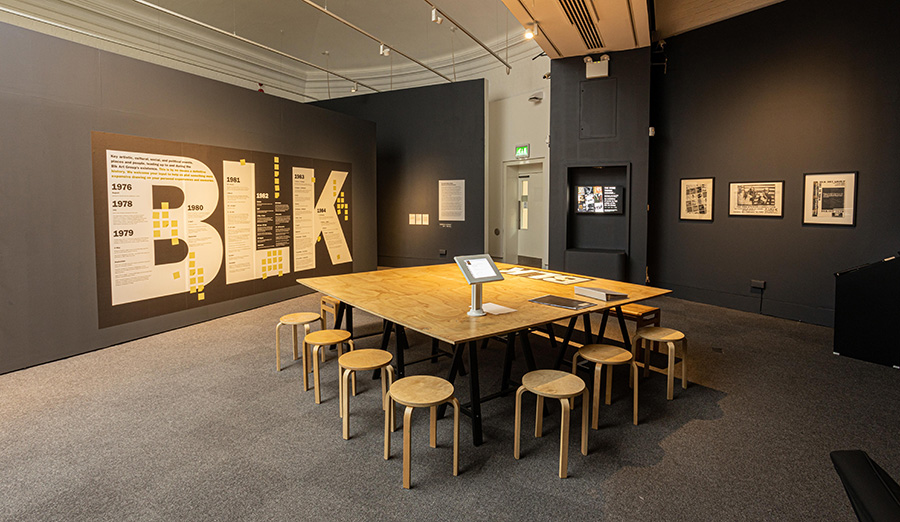 Fig.5 Installation view of the resource and gathering space of the exhibition The more things change… © Owen de Visser. Image courtesy of Wolverhampton Art Gallery.
Fig.5 Installation view of the resource and gathering space of the exhibition The more things change… © Owen de Visser. Image courtesy of Wolverhampton Art Gallery.
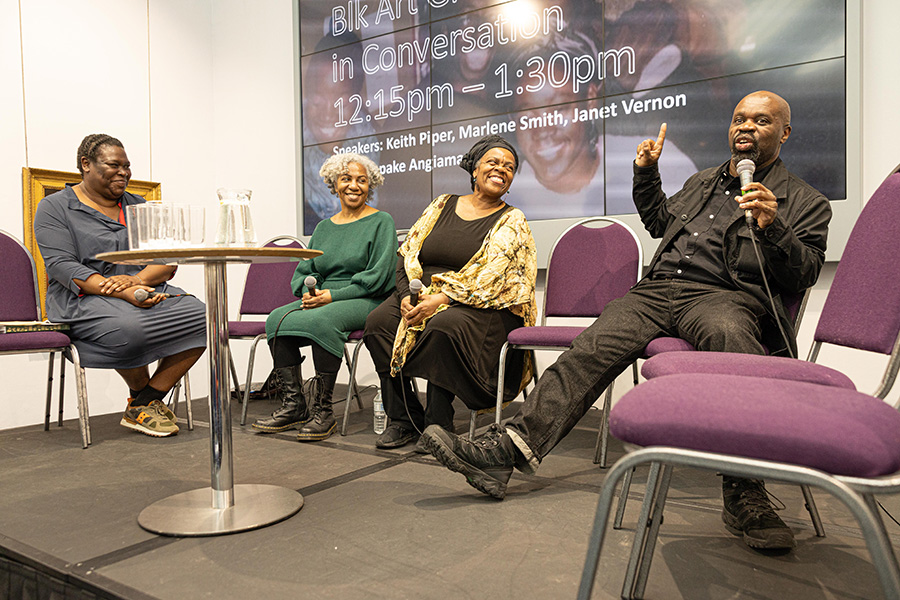 Fig.6 The first panel of the exhibition launch and symposium for The more things change…, held on Saturday 29 April 2023 © Owen de Visser. Image courtesy of Wolverhampton Art Gallery.
Fig.6 The first panel of the exhibition launch and symposium for The more things change…, held on Saturday 29 April 2023 © Owen de Visser. Image courtesy of Wolverhampton Art Gallery.
The more things change… also featured a public programme centred on opening and closing symposia bringing together members of the Blk Art Group that participated in the exhibition alongside key academics and contemporary artists. The opening symposium evaluated the Blk Art Group’s impact and their legacy for future generations of Black artists. It began with a panel chaired by Sepake Angiama, artistic director at iniva, which exemplified the day’s talks (fig.6). She shared a letter she penned to the young Black artist. Angiama encouraged them to continuously strive to portray their experiences in society, just as Piper, Smith and Vernon, who were present on the stage, have done throughout their careers [2]. Angiama’s words were incredibly poignant and set a goal for the future whilst honouring the past. A particularly memorable moment of the symposium was when Marlene Smith recalled the process of making Good Housekeeping III, describing sculpting the figure through telling her daughter, ‘she has arms’, ‘she has a face.’ The emotional connection and humanisation made the personal impact of the work for Smith immediately palpable. Understandably, Smith also emphasised the relevance of the work in our contemporary cultural and political climate where violence continues to be a haunting presence in the lives of Black Britons. During a panel discussion on community and the collective, Piper drew a parallel between this symposium and the first national Black art convention for the ways they have drawn artists and communities together to discuss Black art. The fact that the exhibition has been digitised as a virtual tour hosted on Wolverhampton Art Gallery’s website, that the symposia were recorded, and that the resources gathered continue to be accessible, all demonstrate the continued importance of these events for education. Although this highlights the legacy of the exhibition and its public programme, it also reinforces the current predominant emphasis on political issues and the burden of representation placed on Black artists.
The closing symposium initially felt like a challenge to this. The first panel was a conversation between Marlene Smith, Claudette Johnson, and Ajamu X, chaired by Gilane Tawdros. It was a thought-provoking and nuanced insight into the interplay between expressing lived experience and the importance of materiality in these artists’ works. Johnson used the phrase ‘words are daggers’ when referring to the way it felt to be a young Black woman artist making work – even more so as the only Black artist in her year at Wolverhampton Polytechnic – and trying to find a way to talk about the intersections in her work without underplaying the pain of them in society at that time. Johnson’s materiality, her experimentation with space, colour, and line, is a direct result of her reality and practice instigating a different level of expressiveness. All three artists discussed the centrality of material to their respective aesthetic practices. It was incredibly moving and personal, and it felt like these discussions were breaking new ground through their focus on materiality and emotion. However, the symposium’s later talks echoed the classical framework that has thus far been used for interpreting Black art. I am not denying the importance of these conversations; these are influential artists and academics who have had an enormous impact on British art and whose insights are invaluable. After the first panel though, these conversations seemed to stunt the sense of progress and excitement tangible in the audience.
Ultimately, The more things change… broke new ground as a major exhibition with a vast array of work by key artists. Its focus on foregrounding and preserving the Blk Art Group’s history cannot be understated. The way the exhibition and public programme highlighted their legacy in defining Black art and encouraging new generations of artists whilst simultaneously shining light onto the artists’ individuality and their processes of making will undoubtedly impact interpretations of Black art in the years to come. Neither the exhibition nor I argue that the definition of Black art and the origins of the Blk Art Group are not important or have been discussed to a limit – I think everything points to the necessity of giving these topics the amount of attention they deserve. However, I argue that space should be made to illuminate different ways of interpreting these artist’s work. It seems there is still a way to go in making that shift and taking the discussion of practice and materiality as far as the show’s curation is pushing it. The more things change… is nonetheless a brilliant first step in moving perceptions of the Blk Art Group’s work further into the realms of both ‘Black’ and ‘art.’
Emily Langridge studied for their MA in History of Art (British Art) at the University of Birmingham in 2021-22.
With thanks to Wolverhampton Art Gallery for their generous support
All images were photographed by Owen de Visser for Wolverhampton Art Gallery and are included courtesy of Wolverhampton Art Gallery. Please contact Wolverhampton Art Gallery via email at art.gallery@wolverhampton.gov.uk or via telephone at 01902 552055 in the first instance for any copyright queries.
Endnotes
[1] Wolverhampton Art Gallery, ‘Virtual Tours’, Wolverhampton Arts & Culture, https://www.wolverhamptonart.org.uk/virtual-tours/, accessed 24th September 2023.
[2] Sepake Angiama, ‘Dear Young Black Artist – A Letter From The Future’, Black Blossoms Online, https://www.black-blossoms.online/the-journal/dear-young-black-artist, accessed 24th September 2023.